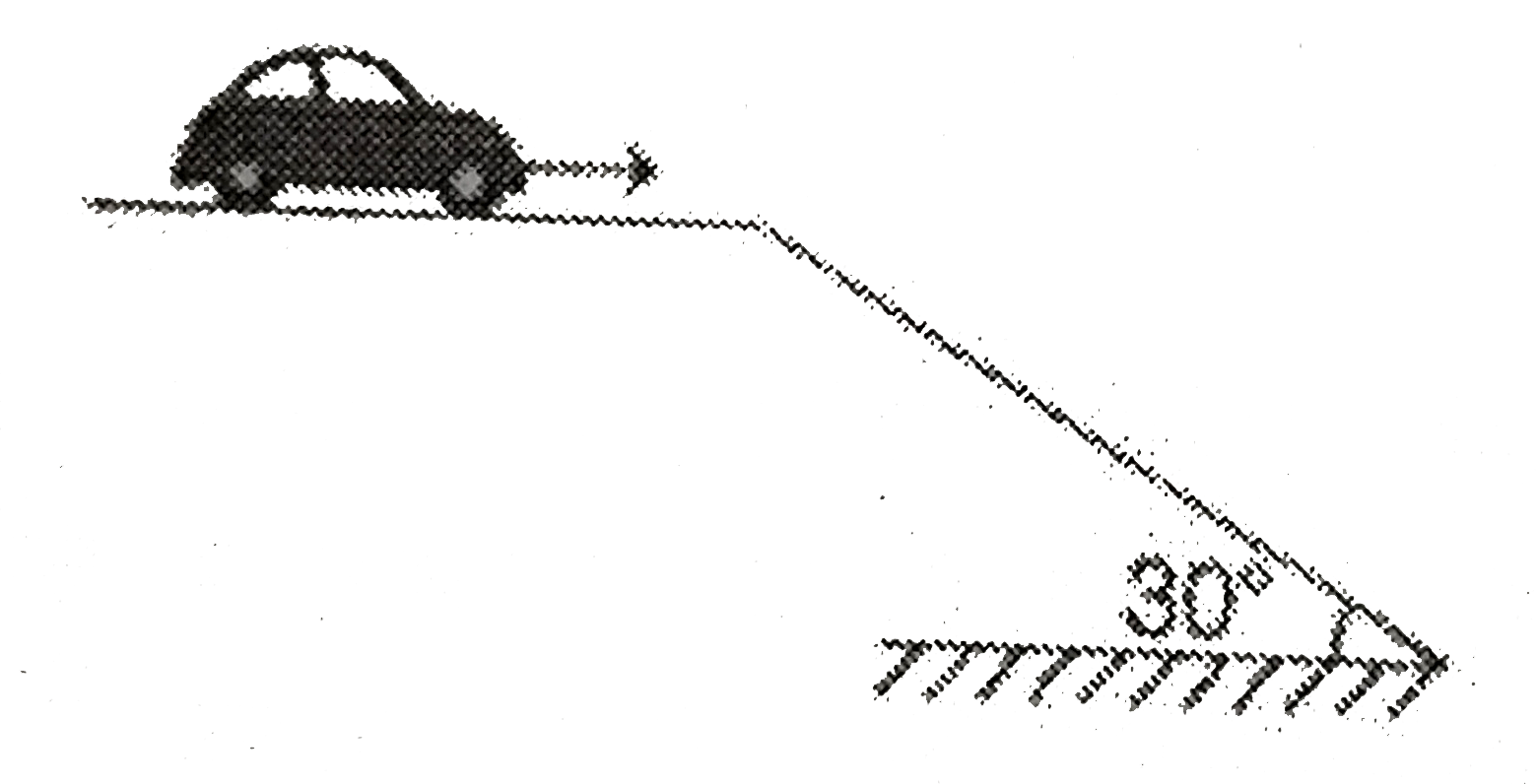You are holding bottle of bubbled water inside a car moving forward. When the driver applies te brakes
Bubbles in the middle of the liquid will start to move forward with respect to the bottle
Bubbles will start to move backward with respect to the bottle
Bubbles will start at the same horizontal location in the water.
Depending on the speed of the car, bubbles might move forward or backward.
The correct Answer is:B
NA
Topper's Solved these Questions
- BOOK - FIITJEECHAPTER - TEST PAPERSEXERCISE - PHYSICS747videos
TEST PAPERS
- BOOK - FIITJEECHAPTER - SIMPLE HARMONIC MOTIONEXERCISE - Assignment Problems (Objective) (Level-II)20videos
SIMPLE HARMONIC MOTION
- BOOK - FIITJEECHAPTER - WORK, ENERGY AND POWER EXERCISE - COMPREHENSIONS ( Comprehension-II)5videos
WORK, ENERGY AND POWER
Similar Questions
A car of 1000 kg moving with a velocity of30m/s stops with uniform acceleration after covering a distance of 50 m on application of brakes. Find the force applied by the brakes on the car and also work done.
View SolutionA car is running on a road. The driver applies the brakes such that the tyres jam and car skids to stop. Its kinetic energy decreasing to zero.What type of energy increases as a result of the action? If driver operates the brakes in such a way that there is no skidding or sliding. In this case, what type of energy increases as a result of the action ?
View Solution
Knowledge Check
- Question 1 - Select One
What happens to the speed of a moving car when force is applied in the opposite
ASpeed increasesBSpeed decreasesCNo change in speedDChange in direction - Question 2 - Select One
A car going at a speed of 6m/s when it encounters a 15m slope of angle 30∘. The friction coefficient between the road an tyre is 0.5. the driver applies the brakes. The minimum speed of car with with which it can reach the bottom is (g=10m/s2)
 A4m/sB3m/sC7.49m/sD8.45m/s
A4m/sB3m/sC7.49m/sD8.45m/s - Question 3 - Select One
What happens to the speed of a moving car when force is applied in the opposite
AIt increasesBIt decreasesCIt remains as it isDIt increases first and then decreases.
A car is moving with speed u. Driver of the car sees red traffic light. His reaction time is t, then find out the distance travelled by the car after the instant when the driver decided to apply brakes. Assume uniform retardation 'a' after applying brakes.
View Solutiontwo cars approach each other on a straight road. Car A moves at 16m/s and car B moves at 8m/s. When they are 45m apart both drivers apply their brakes. Car A slows down at .2m/s2 . While car B slows down at 4m/s2. Where and when do they collide?
View SolutionTwo cars 1 and 2 move with velocities v1 and v2, respectively, on a straight road in same direction When the crs are separated by a destance d the driver of car 1 applies brakes and the car moves with uniform retardation a1, Simultaneously, car 2 starts accelerating with a2, If v1<v2, find the minimum initial separation between the cars to avoid collision between then.
View SolutionTwo car A and B travelling in the same direction with velocities v1 and v2(v1>v2). When the car A is at a distance d ahead of the car B, the driver of the car A applied the brake producing a uniform retardation a. There wil be no collision when.
View SolutionTwo cars A and B are travelling in the same direction with velocities v1 and v2(v1>v2). When the car A is at a distance d ahead of the car B, the driver of the car A applied the brake producing a uniform retardation a. There will be no collision when
View Solution

